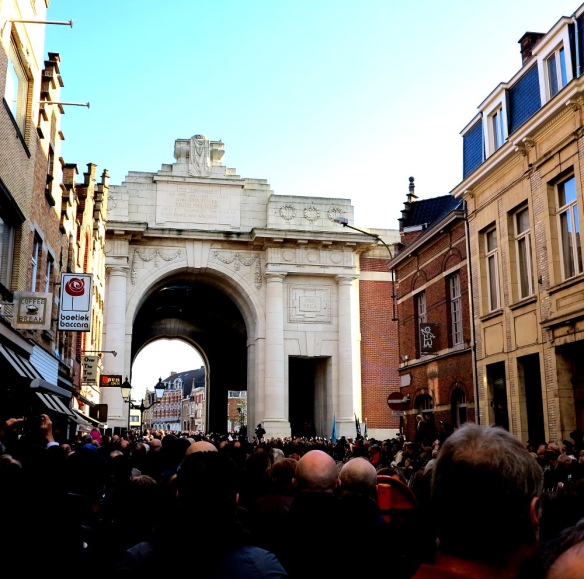by Dave Allan-Petale
I stood at the Menin Gate memorial in Ypres, Belgium and observed two minutes silence for the dead of the Great War on Remembrance Day. It was a beautiful, moving thing to do. I was there to honour the memory of my grandfather, George Monkhouse, who fought on the Western Front with the ANZACs (Australian and New Zealand Army Corps). He is a man whom I have no memory of and only know through family legends and relics like photographs and dusty medals. But I got shivers down my spine when I saw the places he’d been and felt somehow connected to him.
The first place I saw that was part of George Monkhouse’s campaign was Villers-Bretonneux, a small town outside Amiens that saw a fair share of action. It was captured by the Germans then retaken by the allies with the Australians leading the way. Thousands of men from downunder fell in the fields surrounding the town. Their sacrifice is honoured in several small plots on the outskirts and with the Australian War Memorial, which stands on a hill with an amazing panorama of the area. The green escarpment rolls like a gentle sea across the horizon.
We drove away from Villers-Bretonneux and across the border to Belgium, arriving in Ypres well after dark. The town was full of veterans, relatives and tourists who’d come to pay their respects at the memorials. Ypres was a strategic town during WWI and tens of thousands of men died in battles around it. On the morning of Remembrance Day a parade was held leading to the Menin Gate where Prince Phillip of Belgium and many other dignitaries from Britain and the Commonwealth laid wreaths and said prayers. The last post was played, echoing through the silent city streets. I couldn’t help but have red eyes at the end.

The acoustics inside the Menin Gate projected the bugle playing The Last Post so clearly it was like we were right inside it – the silence afterwards was almost deafening
My grandfather left no letters, told no stories. I don’t know if he had friends who perished or what anguish he suffered. But my visit to the battlefields of France and Belgium has brought me a real appreciation for what he did. He came from halfway across the world, more than 20,000km, to fight for people he didn’t know. Thankfully he was lucky enough to return home otherwise I wouldn’t be around today.
Seeing row after row of graves and all the names etched into the cold stones of the war memorials is incredibly sad. If anything it is a kick in backside to live as well as you can, because if you don’t there are tens of thousands in Flanders fields’ graves who’d gladly swap places.


